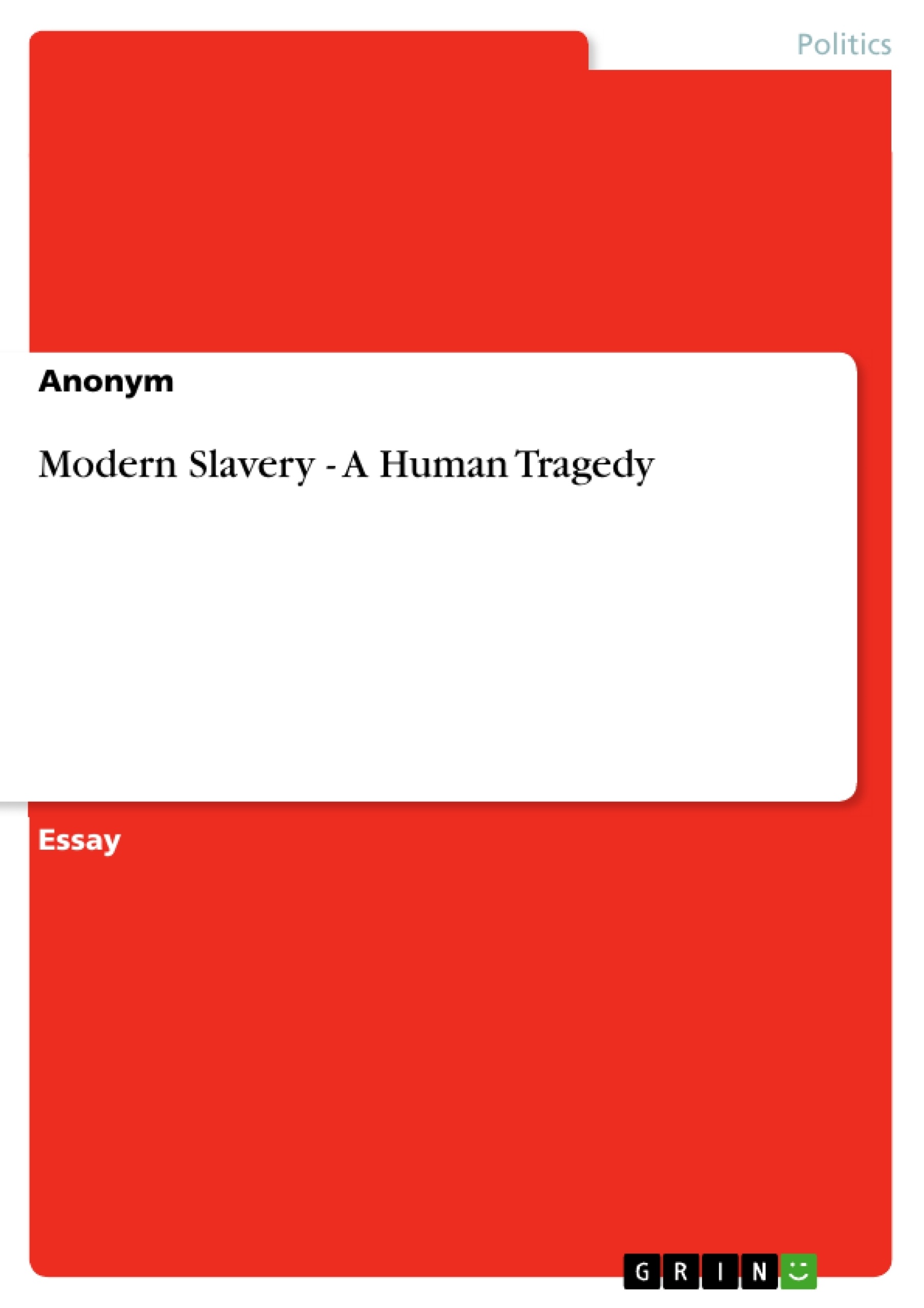Slavery seems like a long gone practice from the past, but even in our times, people suffer from being bought and sold to strange people. Nowadays, as it is mostly described as a form of human trafficking,an unbelievable amount of 12 to 20 million people are believed to be traded as modern day slaves. This paper investigates how globalization has impacted the trade of modern day slaves and will look at how this problem is tackled by our current policies.
Inhaltsverzeichnis (Table of Contents)
- Modern-day Slavery
- The Concept of Slavery
- Forms of Slavery
- The Victims of Modern Slavery
- Globalization and its implications
- Globalization – A Short Definition
- Globalization and Modern Slavery
Zielsetzung und Themenschwerpunkte (Objectives and Key Themes)
This paper aims to provide a detailed account of modern-day slavery and its connection to globalization. It explores the various forms of slavery, its prevalence, and the impact of globalization on the trafficking and exploitation of enslaved individuals.
- Modern-day slavery and its connection to globalization
- The various forms of slavery in the 21st century
- The impact of globalization on the slave trade
- The prevalence of slavery in the modern world
- The vulnerability of certain groups to forced labor
Zusammenfassung der Kapitel (Chapter Summaries)
The first chapter provides a comprehensive overview of modern slavery, defining it as a contemporary phenomenon distinct from its historical counterpart. The chapter highlights the different forms of slavery prevalent in the 21st century, including chattel slavery, contract slavery, and debt bondage. It examines the vulnerability of certain groups, like women, children, and migrants, to becoming victims of slavery. The chapter concludes with an illustration of the working conditions and exploitation faced by slaves in the modern world.
The second chapter explores the concept of globalization and its relationship to the rise of modern slavery. It examines how the interconnectedness fostered by globalization has facilitated the expansion of the slave trade, enabling traffickers to move slaves across borders more easily. It argues that the emphasis on economic efficiency in the globalized world has contributed to the growth of a market for cheap labor, increasing the demand for slaves. The chapter also discusses the dangers of globalization, emphasizing the potential for exploitation and the undermining of national sovereignty.
Schlüsselwörter (Keywords)
The primary focus of this paper is on modern-day slavery, its forms, its prevalence, and its connection to globalization. Key terms include forced labor, chattel slavery, contract slavery, debt bondage, human trafficking, globalization, globalized spaces, time-space compression, and the underground economy. The paper examines the impact of these concepts on the vulnerability of certain groups to exploitation and the challenges faced in combating modern slavery.
- Quote paper
- Anonym (Author), 2011, Modern Slavery - A Human Tragedy, Munich, GRIN Verlag, https://www.grin.com/document/193428



